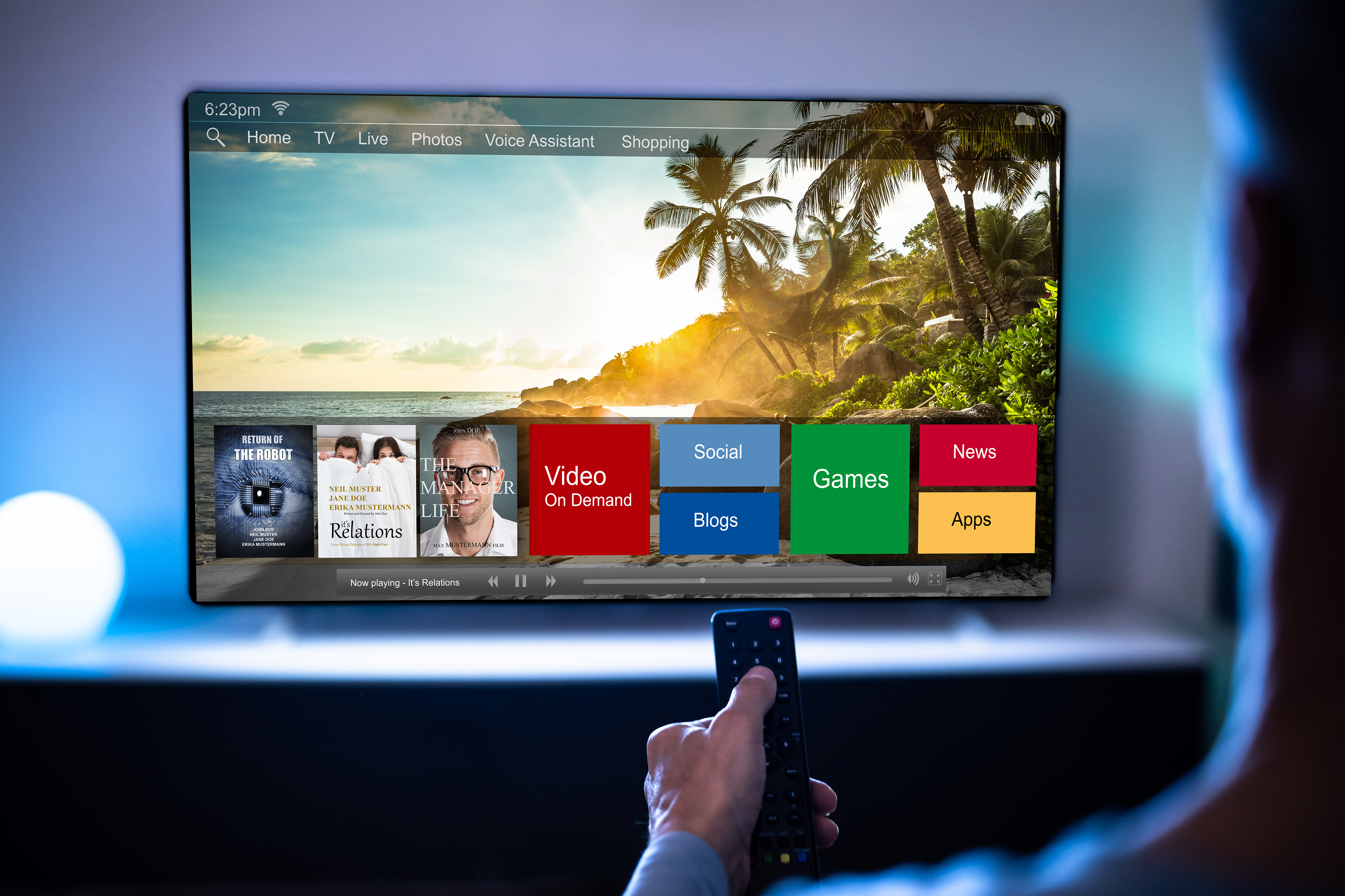How Branded Smart TVs Can Put Pay-TV Operators Back in the Driver’s Seat
Operator-branded TVs give pay-TV services more prominence than an app and more control than a Privileged OpApp.

Let’s make it clear: Pay TV is not going anywhere soon. But as TV manufacturers strive to put all available services in one place, viewers are less inclined to want to manage yet another piece of hardware. A set-top box (STB) becomes just another tree in the technological jungle of cables, boxes and multiple remote controls. Moreover, it is very expensive for operators to subsidize and carry the costs associated with STBs. Eventually, the old way of paying back the extensive costs of STBs will be obsolete.
Rather than spelling doom for the pay-TV industry, this change in subscribers’ needs presents an opportunity to follow an entirely new and scalable path for operators. In fact, pay-TV operators are in the prime position to become super aggregators themselves, removing the need for any external devices. By taking ownership of the smart TV, they can maximize capex savings, cut the competition short, and vastly improve the subscriber experience.
To begin, this article will outline why other solutions—like TV apps—are just intermediate steps or compromises with significant limitations. Then, it will explain how an operator-branded TV can put pay-TV operators back in control and on an accelerated path for growth.
The Constraints of TV Apps
An alternative to the STB is developing an app that viewers can download to their smart TVs and, with a subscription, begin watching content immediately. Obviously, this means neither the viewer nor the operator will need any additional hardware, in turn causing little operational and financial stress for both parties. TV apps may seem like an easy win, and for some operators, they are.
Yet this choice replaces a hardware problem with a competition problem. Whenever the viewer turns on the TV screen, this newly created app competes with an array of other downloaded apps, including other streaming platforms. Effectively, the app undermines the unified entertainment experience that pay TV uniquely provides.
Because they don’t have access to the whole device and can’t control the overall experience, operators cannot aggregate other OTT apps and TV channels within their smart TV app. Even if the app appears to be on the same surface level as the other apps, which is not guaranteed, viewers may decide it’s one subscription too many, and they may eventually cancel.
An additional drawback of TV apps is that they have to take into account the business constraints imposed by the provider of the underlying platform OS. This may involve having to share revenue and negotiate for home page placement. At the same time, the operator only gets a limited view of subscribers’ viewing habits, data that is vital for service and revenue optimization.
While seeming straightforward at first, this option may not provide a great return on investment for the pay-TV service—especially since the operator has replaced the cost of STBs with a weaker value proposition.
OpApps: A Better but Limited Solution
An HbbTV OpApp offers an alternative to smart TV apps. HbbTV (Hybrid broadcast broadband TV) is both an open industry standard and an initiative to promote the mixture of broadcast and broadband services on TV. The HbbTV Association initially developed the OpApp (Operator Application) specification in response to industry demands for a way to deliver pay TV to existing TV devices without the need for an additional STB. The first commercial OpApp launched on a TV set in 2019, and was followed by additional deployments, mainly in Europe.
HbbTV has defined a Privileged OpApp variant that functions like a special, more powerful application, allowing the operator to take over some key parts of the TV system user interface, typically the linear TV channel list, the guide, and potentially an on-demand and search portal linked to those.
Privileged OpApps run independently of smart TV apps and are either embedded in the TV (with help from the TV manufacturer) or installed onto the system during first time setup, or afterward via a decryption device, such as a Common Interface module. Once they’re loaded, Privileged OpApps allow operators to establish their user experience, with viewers accessing the operator UI every time they use the TV.
Unfortunately, there are a few major problems with this option. HbbTV has not yet been deployed in all countries, particularly in some parts of Europe and the United States, yet it is required to run OpApps. This fact discourages the idea of Privileged OpApps as a universal solution for pay-TV operators, at least for the time being.
Additionally, Privileged OpApps can lack features that would otherwise be available on a dedicated STB, depending on the variant of OpApp the operator chooses and the level of collaboration with the TV manufacturer.
This may not mean much for consumers, who are happy to forgo all the extra hardware if it means they can still have an STB-like experience. But for the pay-TV operator, OpApps put them at a technical disadvantage, as there may still be parts of the TV experience that they can’t control.
The All-Around Best Solution: Operator-Branded TVs
Pay-TV operators have a well-respected brand and can work with a manufacturer to build their own branded TVs, selling them directly or through retail without taking on the liability of subsidizing a TV product for existing and new customers. This approach gives operators complete control over the specifications and the system UI, while in turn offering all the standard features that subscribers look for in a TV.
A branded TV also puts the operator in a position to access the revenue streams that TV OS providers are increasingly able to extract owing to their gateway position in the home. To set the branded TV further apart from the competition, operators can then offer an incentive at the time of purchase, such as a free subscription for the first few months, or a mobile phone bundle in the case of multiplay providers.
While the concept of an operator-branded TV is nothing new, technology has advanced far enough in the last few years to make the venture financially attractive. Off-the-shelf TV ODM hardware provides a better economy of scale compared with STBs, and yet the device still retains all the features—including device management and performance monitoring that operators rely on to maintain the highest levels of quality of service—without making the subscriber wait to receive another piece of hardware in the mail. Plus, the device is already built around the pay-TV service, so the UI is not only easy for the subscriber to use but also provides exclusive access.
In the future, there will be even more options for operator-branded TVs. Direct retail sales of branded TVs will allow operators to make a margin on selling hardware. Operators can compete with other smart TVs by offering a compelling product that aggregates video services (i.e., linear, OTT, VOD) in a more consistent way than smart TV manufacturers alone can do.
An operator-branded TV is appealing to many consumers looking for a smart TV that is easy-to-use, with a good quality-to-price ratio and all the services they want already built-in. The majority of consumers don’t want to investigate complex technical specifications and compare all the smart TV brands, hardware models, and special offers available on retail shelves. This need for simplicity is one that only an operator-branded TV can satisfy.
In Conclusion
Operator-branded TVs give pay-TV services more prominence than an app and more control than a Privileged OpApp. They also do away with the extra hardware of a STB while providing potential for cross promotion of products and services using the capabilities of the UI, and offering new sources of revenue from retail purchases, rentals, and subscriptions bundles.
With an operator-branded TV, pay-TV operators can seize control of the smart TV experience and become super aggregators, driving new subscriber growth and boosting revenues without bearing the cost of additional STB hardware.
Get the TV Tech Newsletter
The professional video industry's #1 source for news, trends and product and tech information. Sign up below.
Marco Frattolin is Head of Operator Products at Vewd.

